Why did ancient people build a cave in the shape of a female genital organ (7 photos)
The name of this unusual cave is written as “Womb”, but it is better known as simply “Womb” or Utroba Cave. This is an ancient Thracian cave sanctuary, which dates back to the 9th-10th century BC. The shape of the female genital organ corresponding to the name is not a whim of nature, but handmade. And in the cave there is even a symbolic “process of copulation” - but more on that below. 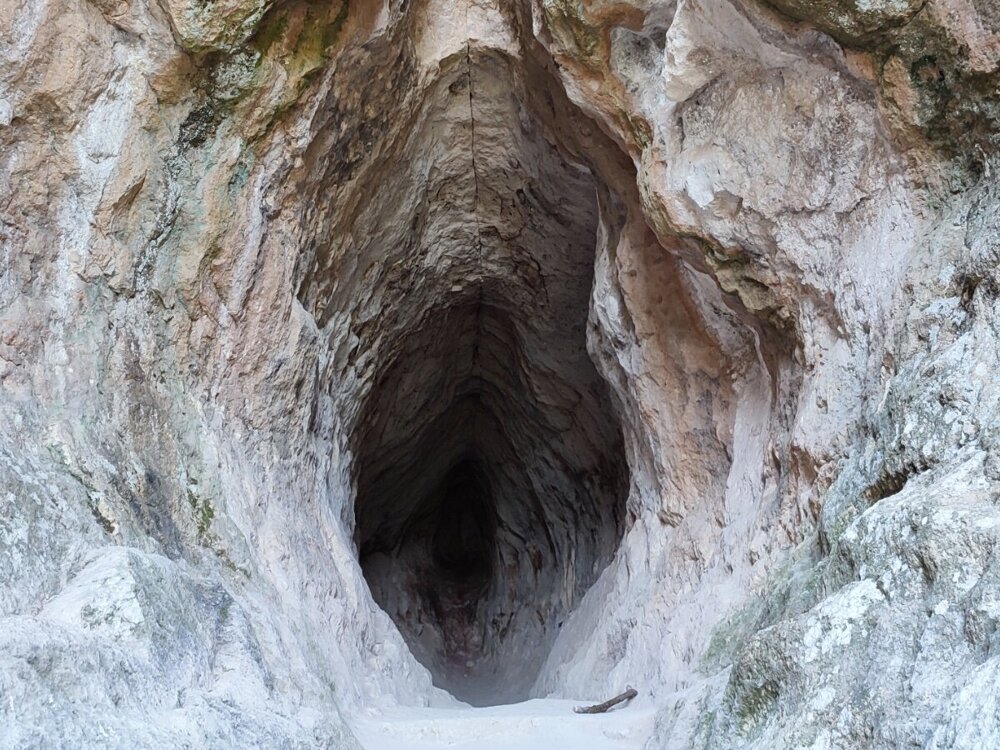
Entrance to the cave "Womb"
The ancient people, apparently, had to do little finishing work - the cave itself already existed, they only worked on the entrance to it and some things inside. Researchers believe that the entrance to the cave was a gap in the rock, which people then widened, giving it the appropriate shape - now the entrance to the cave is 3 meters high and 2.5 meters wide.
The reference books correctly write that the cave has the shape of a vulva and is also known under the names “Cave Womb” and “Womb Cave.” If there are incorrect names, you can come up with them yourself.
But inside, they say, the cave looks exactly as it might be drawn in medical textbooks - that is, it resembles a uterus. By the way, the word Utroba is translated from Bulgarian as uterus. 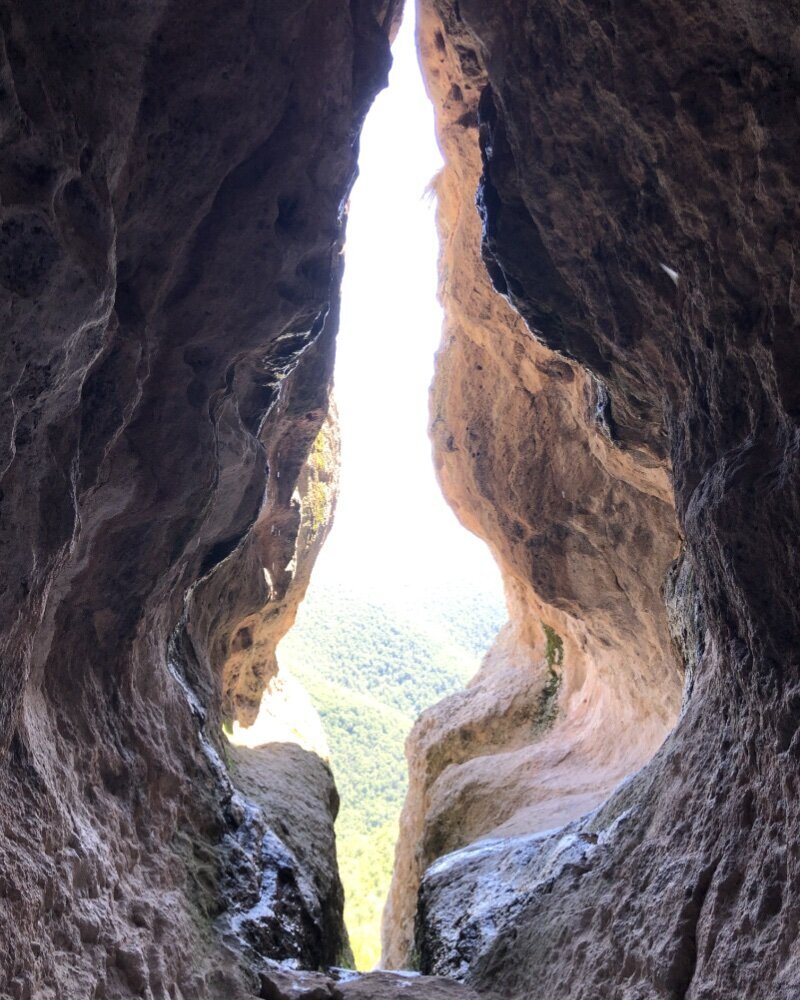
View from the Utrobata cave
Inside the “Womb” there is a certain, as the researchers write, altar - carved directly into the rock and having a height of 1.3 meters. Altar - because the cave is considered an ancient sanctuary.
In general, in the local mountains you can find a number of other caves that date back to the same time and for the same purposes (but these caves have a different shape). Let us finally say that we are talking about Bulgaria, where this cave is located in the Rhodope Mountains, in the province of Kardzhali, near the village of Ilnitsa.
It is interesting that they write about it in such a way that it was “completed” more than 3 thousand years ago, and besides, it has long been known to local residents, but was “rediscovered” only in 2001. 
Signpost on the path leading to the Utrobata cave
The story is simple - a certain school teacher named Mincho Gumarov from Kardzhali, who is interested in speleology, learned about an unusual cave in the form of a female genital organ from local peasant women (note, not peasants - an interesting fact).
After that, he retold the peasant women's story to the director of the local Historical Museum, and then convinced archaeologists to go look for this cave. They say that they were skeptical, but after looking at the rock they came to, some carved niches characteristic of ancient sanctuaries in the Rhodope Mountains, they went to study the “Womb” itself.
At the same time, a discovery was made that made this Bulgarian area famous throughout the world. Readers have probably already wondered what kind of rituals were carried out in a cave of such an unusual shape - so, we are talking about them. 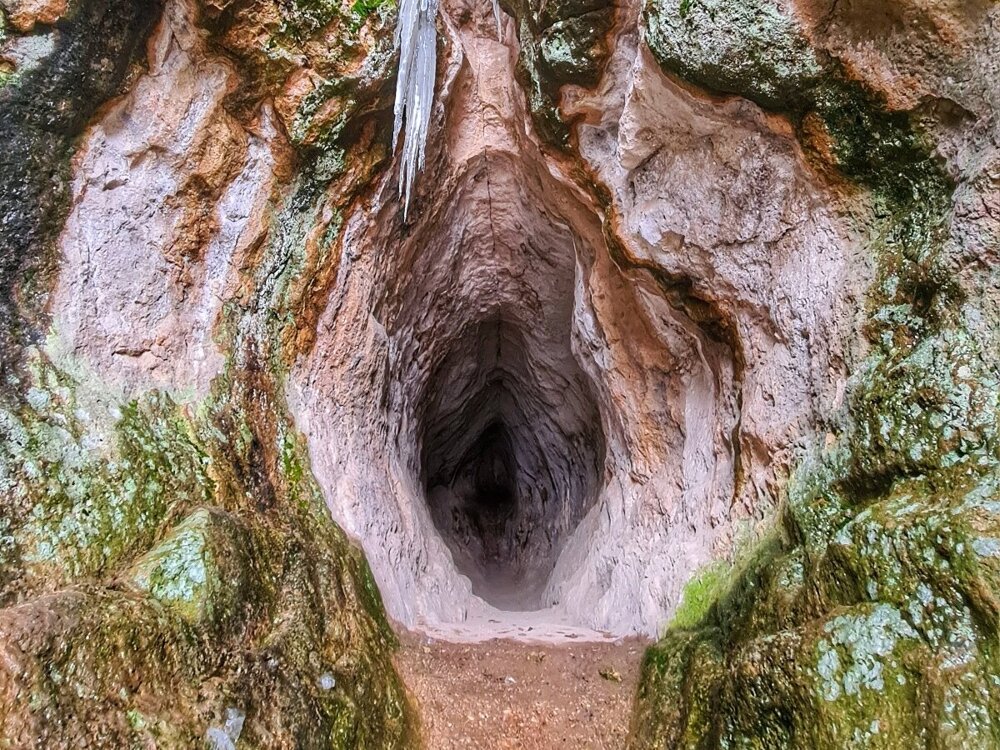
Once again the entrance to the “Womb” cave
Obviously, one way or another, the purpose of the cave must be connected with a relevant topic - for example, fertilization. So, it turned out that exactly at noon a ray of sunlight enters through a gap in the upper part of the cave and begins to move towards that very altar. True, it reaches it only once a year, on a certain day.
Scientists believe that this “light show” symbolizes the process of fertilization - say, it illustrates the relationship between Father Sun and Mother Earth.
Although it is assumed that the main “religious” topic in this case is the fertility of the local land, there are other opinions, including quite obvious ones - about the relationship between people, let’s say. 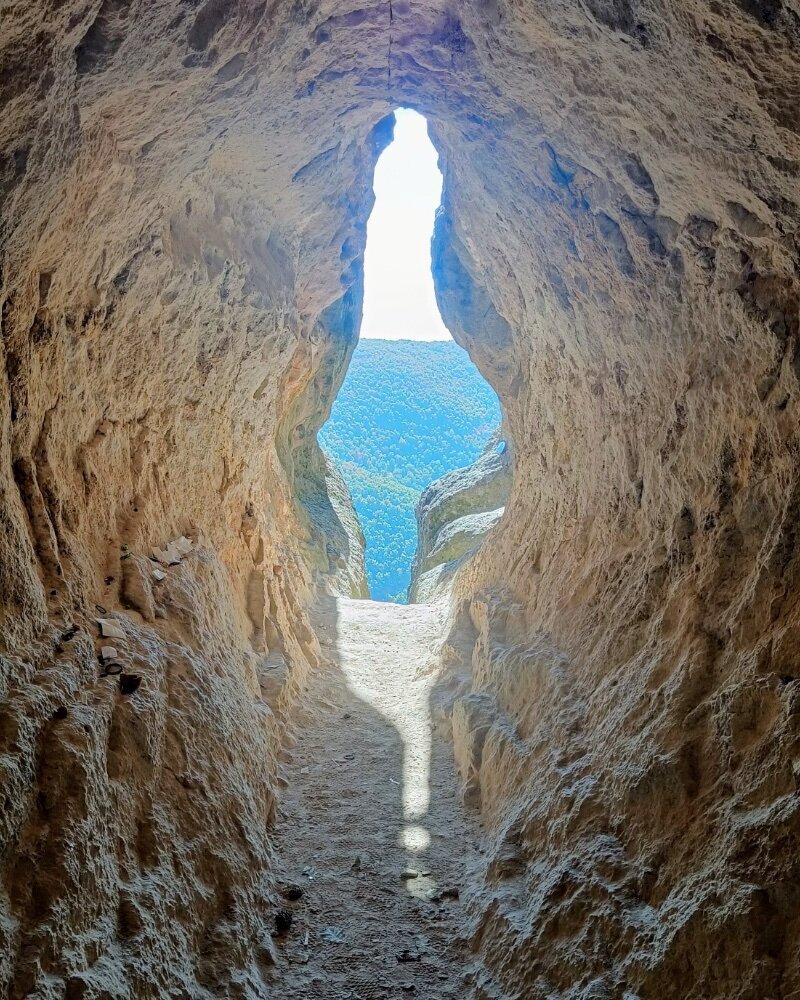
And this is the same ray of sunshine in the “Womb” cave
Local historians have suggested that the cave may have originally served as a kind of protected space for people trying to conceive a child, and then for ritual offerings in gratitude for a successful task.
This interpretation seems to attract much more attention - it is clear that the place quickly became a tourist attraction with all the amenities for this (paths, steps, organized excursions, photo shoots, etc.).
The local community, they say, organizes some kind of demonstrative ritual ceremonies here, imitating ancient people - to the best of their ability, of course, but tourists like it. 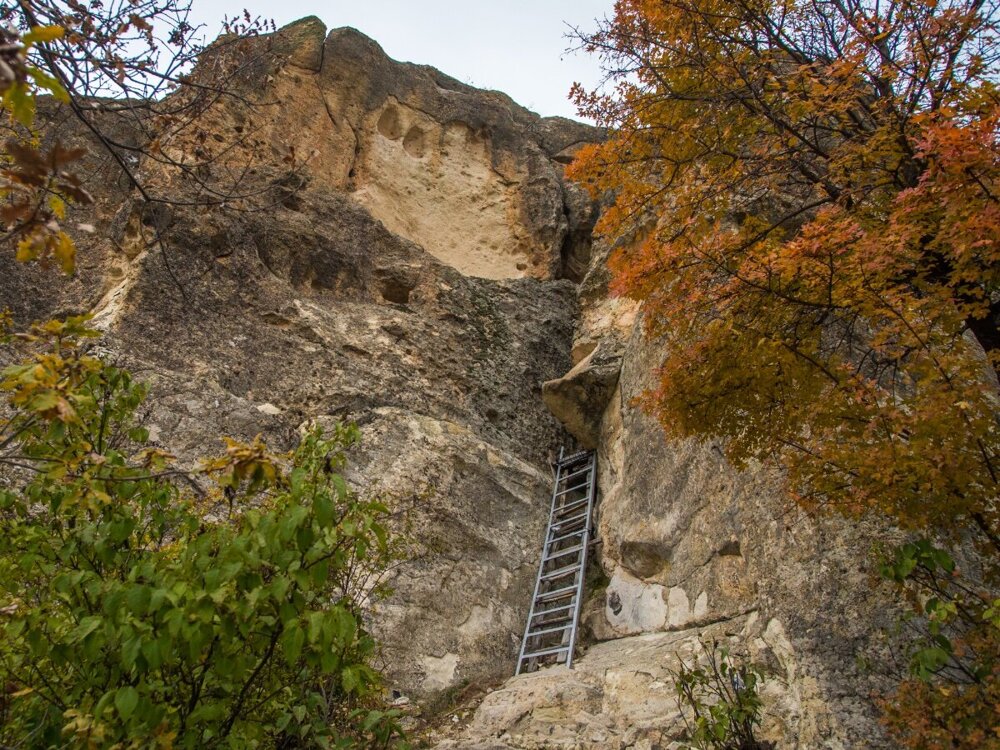 <br
<br
And here are the special ladders - the folk trail to the Utrobata cave will not be overgrown
Yes, by the way, the description of the “Womb” cave says that water either constantly or sometimes flows from it. Probably also symbolic. There is also a kind of dome made inside, which acts as an excellent resonator for low frequencies - all sorts of booming and buzzing sounds, if made in the cave, are carried throughout the entire surrounding area.
Of course, the place also received an appropriate mystical flair. Childless couples come here in the hope that the energy of an unusual place will help them solve their problem.
It’s unlikely that they are trying to solve it right in the cave (it seems that this place can no longer be called a protected space), but it certainly helps someone. But local residents believe that, on the contrary, being in a cave can lead to infertility. In general, everything is at your own peril and risk. 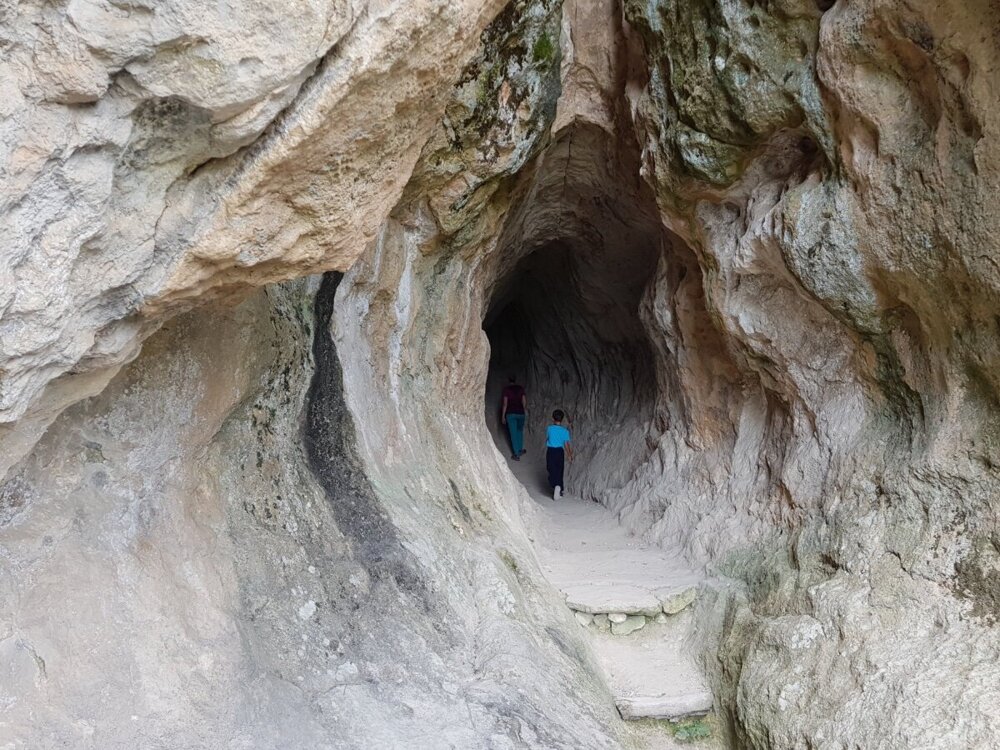
People enter the “Womb” cave - the height of the entrance is approximately clear
P.S. For those who are especially curious and are friends with online maps, it’s approximately here: 41.7047570482507, 25.247998835062994





















